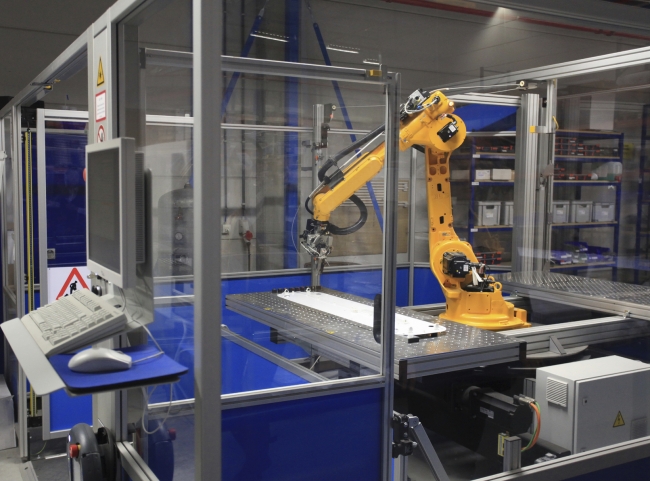3 minute read
Case Study: Digital Twins for Virtual Commissioning
Bernecker & Rainer Industrie Elektronik GmbH (B&R) provides its customers with complete automation solutions that provide maximum flexibility and economic efficiency. B&R worked with Codian Robotics, the leading innovator of pick and place robots, to power a family of delta robots for different applications across multiple industries.
The team used MapleSim, the high-fidelity modeling and simulation platform from Maplesoft to develop and test a delta robot model, based on the Codian D4-1300 robot. The goal of the project was to develop a model that would represent the Codian robot with sufficient accuracy, such that motor sizing could be confidently performed using the model, eliminating the need for physical prototypes.
The Codian robot is powered by B&R control systems – driven by four B&R motors – and is designed to perform with payloads of up to 3kg, with a working envelope of 1300mm. The MapleSim model was developed as a parameterized model which includes rotational position, inertia and ideal gear components from the 1-D Mechanical library in the Motor subsystems, and rigid body frames and multiple types of joints from the Multibody library in the Arm subsystems. The physical parameters of the reference robot such as lengths and masses of the arms, mass and inertia of the tool, and inertia of the motors and their brakes, were then used to configure the MapleSim model.

B&R significantly reduced development time and costs by creating a simulation of a pick-and-place robot / Picture: Getty/iStock
Using Automation Runtime Numerical Control 0 (ARNC0) within B&R Automation Studio, the research team generated multiple trajectories for the robot to travel, and measured the torque in the motors over each path. Trajectories include pick-and-place from the belt, and rotation of the tool. The trajectories were then exported as the corresponding angles of rotation for the different motors, and imported into MapleSim as time lookup tables. The imported trajectories were used to drive the motors in the model, and the torque was measured during each simulation run.
The results from the simulation were then compared with the measured results to determine how closely the model represented the Codian robot. For each trajectory, a plot of the torque measured through each motor in the reference robot was overlaid on the simulated torque.
The peaks of the simulated torque values coincided with those measured from the reference robot with sufficient accuracy to validate the motor parameters in the MapleSim model. However, while the peak values coincided, there were differences in the intermediate torque values. The research team plans to address this by refining how vibrations and friction are being modeled.
The rods and tool center point generate minimal vibration, making the upper arms the dominant source of vibration. Additionally, the friction in the joints of the rods is very small and can be ignored. Therefore, the largest source of friction is the gears in the four motors, which were initially modeled using the ideal gear component. Enhancement work will include using friction values from the datasheet for the B&R motors, and the lossy gear component in MapleSim to model the friction in the gears more accurately.
Having demonstrated that MapleSim can be used to generate a robot model that is suitable for virtual motor sizing, the research team is now focused on refining its design.
